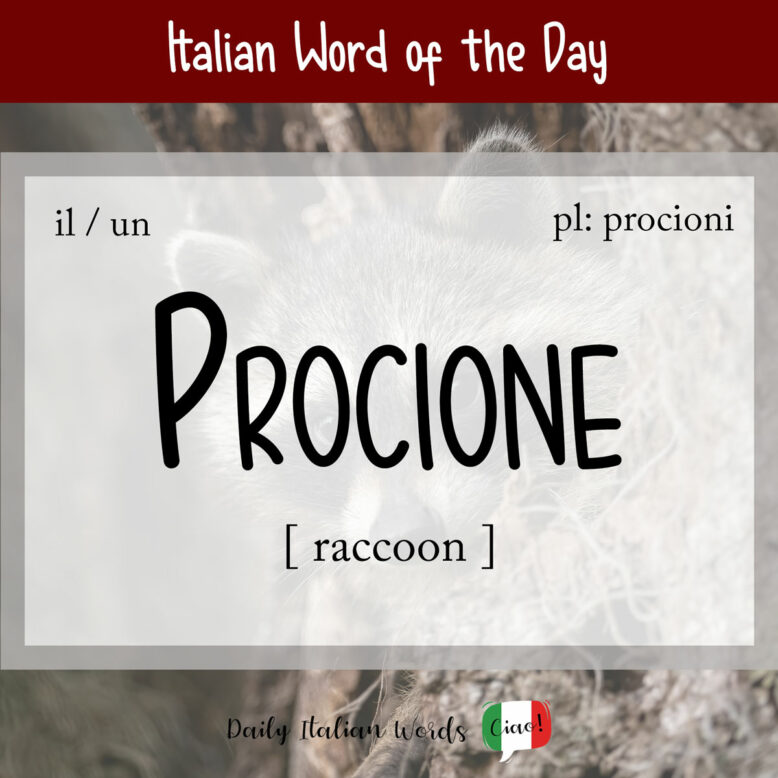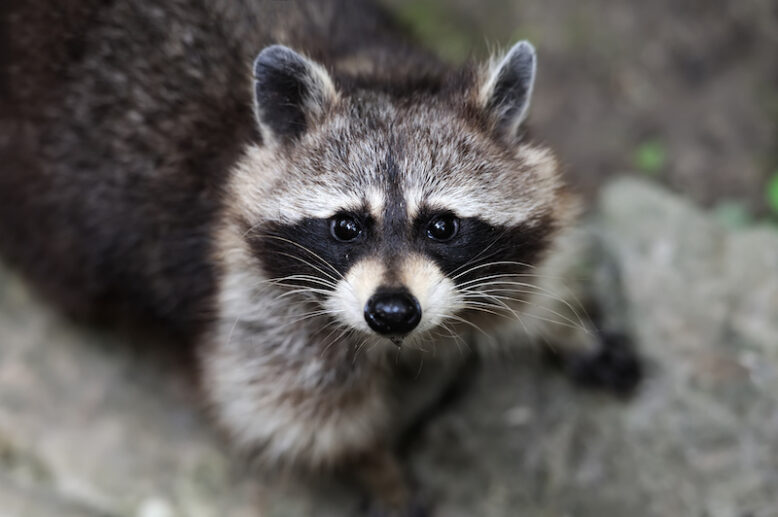Ever since my uncle gifted it to him two years ago, my son has been obsessed with his stuffed raccoon. Wherever my son goes, Raccoon must follow. There are now signs of stuffing coming out of a hole under his armpit, and his fur isn’t nearly as silky as when he first arrived, but my son loves him just the same.
Raccoon (or racoon as it is sometimes spelled) in Italian translates as procione.

It comes from the Greek prokýōn (“barking dog”) which is made up of the words pro (before) and kýōn (dog). They are part of the family of Procyonidae, native to North America and comprising raccoons, ringtails, cacomistles, coatis, kinkajous, olingos, and olinguitos.
Because it is a masculine noun, it takes the following definite and indefinite articles:
- il procione = the raccoon
- i procioni = the raccoons
- un procione = a raccoon
- (dei) procioni = (some) raccoons
I procioni sono attratti dai bidoni della spazzatura.
Raccoons are attracted to trash cans.
Three of the raccoon’s most distinctive features are its dexterous front paws (le abili zampe anteriori), its black facial mask (la mascherina di pelo nero), and its ringed tail (gli anelli chiari e scuri alternati della coda). Its appearance is often compared to that of a bandit (bandito).

There is actually another name for the procione in Italian: orsetto lavatore. This is because Carl Linnaeus, the father of modern taxonomy, classified the raccoon in the genus Ursus as Ursus lotor (“washing bear”) in the 10th edition of Systema Naturae (1758-59). The name was inspired by the animal’s habit of washing its food in a stream before consuming it when in captivity. It was only later, in 1780, that Gottlieb Conrad Christian Storr classified the raccoon in its own genus called Procyon.
Procione (Procyon in English) is also the name given to the brightest star in the constellation of Canis Minor. It is thought that Storr may have named the animal after the star due to the raccoon’s nocturnal lifestyle.
Heather Broster is a graduate with honours in linguistics from the University of Western Ontario. She is an aspiring polyglot, proficient in English and Italian, as well as Japanese, Welsh, and French to varying degrees of fluency. Originally from Toronto, Heather has resided in various countries, notably Italy for a period of six years. Her primary focus lies in the fields of language acquisition, education, and bilingual instruction.


